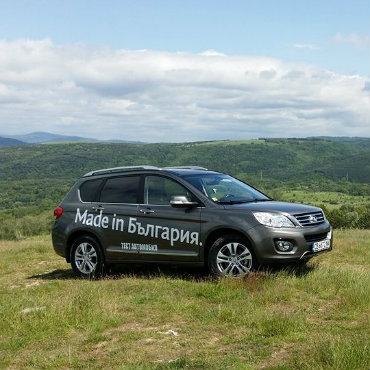
(©Great Wall Bulgaria, Facebook)
In the survey’s ranking, Bulgaria is compared to Romania, Hungary, Poland, Czech Republic, Spain, UK, Italy, France and Germany. The order is based on an index consisting of the weighted positions of the countries in the list.
The study notes that there are 100 large enterprises producing parts for almost every brand in the global automotive industry and that the majority of them are Tier 1, 2 and 3 suppliers, with one a producer with an assembly plant. R&D companies, it says, are focused on improving the automation of manufacturing, as well as designing contemporary electronic systems.
Automotive sector companies are present in all regions of Bulgaria, with the South Central region registering the highest activity. The industry employs over 33,000 people and the revenue generated in 2015 was EUR1.55bn, or 3.5 per cent of the country’s GDP.
Pros and cons of Bulgaria
The companies that took part in the survey indicated the main advantages of Bulgaria as: low labor costs (50 per cent of respondents), while EU membership, as well as proximity to customers and producers, were ranked as the second most important to 45 per cent of respondents, followed by tax incentives for doing business in regions with high unemployment (36 per cent).
Other advantages were the low cost of real estate and electricity, the exchange rate and the accessibility and quality of the workforce.
With a population of 7.6 million, Bulgaria is one of the smaller CEE countries. It is characterized by a relatively high rate of passenger car ownership of 632 per 1,000 inhabitants, similar to the car penetration densities of Poland and Czech Republic.
The network of roads and highways in the country remains largely underdeveloped. According to the statistics of the International Road Federation, only 70 per cent of Bulgaria’s highways, 51 per cent of its national roads and 28 per cent of its secondary roads are in good condition. Bulgaria has 480 kilometers of operational highway infrastructure but none of the six highways are entirely complete (729 planned kilometers are awaiting construction).
Because the successful implementation of future highway and road construction projects is subject to adequate EU funding and strong political will, the government has listed highway construction among its top priorities.
Business challenges identified in the survey included the insufficiency of qualified workers – a problem to 35 per cent of respondents, bureaucracy (22 per cent), an inefficient legal system (13 per cent), corruption and the fact that the majority of the suppliers were located abroad.
Types of buildings
The Colliers survey also revealed the types of buildings occupied by automotive sector operators in Bulgaria – owned/renovated factories, owned built-to-suit, rented or leased built-to-suit. More than half of respondents were in owned/renovated factories. One fifth were situated in owned built-to-suit buildings.
In the past, two local commercial vehicle manufacturers were active in Bulgaria — Madara JSCo (Madara) in Shoumen and Chavdar in Botevgrad, producing trucks and buses respectively. Former truck manufacturer Madara remains operational, now mainly focused on axle and spare part production for commercial vehicles.
In 2008, its long-time client Kama Automobile Zavod OAO Group (KAMAZ), the Russian truck manufacturer, announced plans to set up a joint venture with Madara in order to use the Bulgarian company as an entry into the EU market.
Bulgaria hosts a number of small to mid-sized component manufacturers with export-driven production activities. Following the entrance of Great Wall Motors in Bulgaria, the local component sector is expected to gain momentum, possibly attracting other foreign investors to the market and easily sustaining the 7 – 9 per cent annual growth registered during the last couple of years in this segment.


